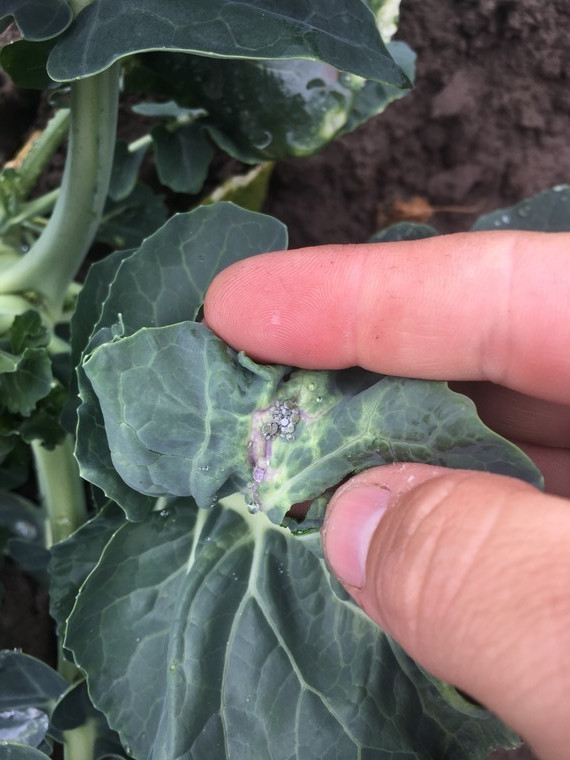With thiacloprid revoked from February 2021, and pymetrozine also missing from the armoury, a fully integrated approach to pest management becomes ever more relevant.
“We need to plan now for life with only a few products that have knockdown effect, particularly as mealy cabbage aphid is becoming more difficult to control,” said Agrovista agronomist and brassica specialist John Ball.
“Non-chemical intervention should always be the first port of call for any form of crop management, and right at the heart of that is monitoring.
“Thanks to tools such as the AHDB’s Aphid News, growers can access localised number forecasts based on suction trap data and Met Office insight. For this year, it’s predicted that due to mild spring conditions, aphids will fly anything up to five weeks earlier than usual, with overwintered and early planted brassicas at higher risk.
“This, coupled with product revocations, means it’s easy to make snap decisions, but it’s important to keep a level head. Without the usual chemical options, growers need to adopt a long-term strategy using what is available, more efficiently, to prevent colonies from building and the associated effect on crop quality.”
Although tempting, growers are discouraged from relying on pyrethroids due to the development of resistant aphid populations, and a lack of efficacy against mealy cabbage aphid in particular.
Instead, ensuring crop hygiene in neighbouring fields is a method that can contribute to successfully overcoming aphid pressure. Managing the green bridge is also important, as well as providing habitats for beneficial predatory insects such as ladybirds, lacewings and hoverflies.
John said: “When it comes to using what remains, one useful tactic is to include a silicon-based wetter in the tank. This improves product performance, particularly for controlling mealy cabbage aphid, as it helps the aphicide to penetrate the pest.
“Previously, when other chemistry was available, positive results were seen from using cyantraniliprole (Verimark®) as a drench in the programme. Consequently, the foliar-applied version of the same active, MinectoTM One, wasn’t really an option. However, this could change.
“If growers choose spinosad (Tracer®) to control cabbage root fly, this allows two applications of Minecto One if required. Minecto One is applied later in the season to control chewing pests, and has also demonstrated useful efficacy against aphids.
“But, applying this strategy offers no early protection, so additional agronomic attention will be needed if adopted. We also have spirotetramat (Movento®), which will become more important in brassica programmes, but although it provides excellent long-term population control, it lacks the knock-down effect thiacloprid provided.
“Natural active ingredient pyrethrin is available, but can prove expensive with high application rates, although may need to be reintroduced since more chemistry has been lost.”
A new non-chemical product is a bioinsecticide based on fatty acids (FLiPPER®), that has an Extension of Authorisation for Minor Use (EAMU) for several outdoor vegetable crops, including Brussels sprout, cabbage and cauliflower.
This contact insecticide controls a range of pests such as aphids, whiteflies, and spider mites, with no repellent effect against bees or other arthropods.
John said: “Fatty acids play a valuable role in practicing Integrated Pest Management (IPM), not only because they have minimal impact on beneficials, but also because they have no maximum residue limit (MRL), meaning a zero post-harvest interval.
“For maximum efficacy, apply at the first stages of infestation, and when contact with the pest is most likely. Combine with other tactics such as building beneficial insect populations and using applications of cyantraniliprole and spirotetramat.”




